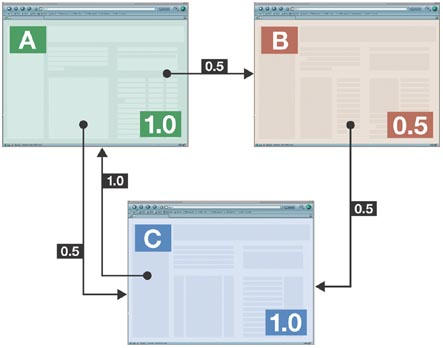Figure 1.

A simplified example of page ranking by link analysis of three web pages, A, B and C, adapted from Page et al, 1998. Each page on the worldwide web is initially assigned a raw page rank value of 1. About 85% of this value is passed on to pages that this page points to, divided roughly equally across all links made. A page's final raw rank value can therefore only be calculated by a series of iterations because links can be made back and forth between any number of pages. The result is the sum of the initial page value plus anything that gets assigned to it from incoming links. Obviously, the more links that lead to a web page, the higher its score. In the last step of the calculation, raw rank values are converted to PageRank scores by use of an algorithm known only to the search engine company that applies it. This value constantly changes as new challenges from web spammers and results ‘optimizers' are met. Those who depend on their Google ranking for their economic survival can be either pleasantly or unpleasantly surprised by the outcome (Battelle, 2005).
